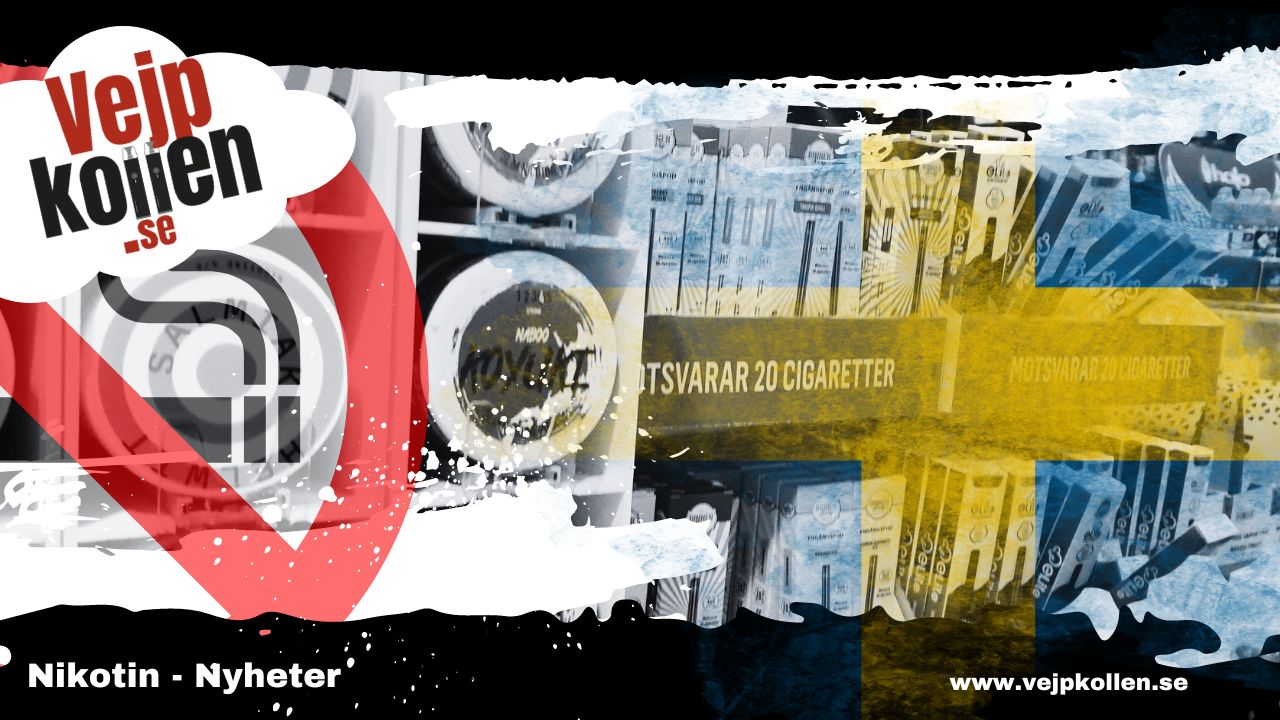The tobacco policy objective will be changed. In future, different nicotine products will be regulated according to their risk profile and not in the same way as before, regardless of whether they are cigarettes, snus or e-cigarettes. The government announced this in connection with the budget bill for 2025.
"This is an important change of course and a sign that the government has listened to those of us who use smokeless nicotine to stay smoke-free." says Karl-Åke Johansson, spokesperson for the user organisation Svenska Vejpare.
The goal of Swedish tobacco policy should no longer be exclusively about getting fewer Swedes to use nicotine. Instead, it should be about reducing the harm caused by nicotine use, for example by ensuring that measures and initiatives take into account the differences between smoke-free use and cigarette smoking. This was made clear after the government presented the budget bill for 2025.
"The new overall objective for tobacco and nicotine products emphasises the Government's assessment that the objective for tobacco policy should take into account the varying harmful effects that different tobacco and nicotine products can cause. The same overall objective should therefore apply to alcohol as well as tobacco and nicotine." writes the government in its bill on Health, medical and social care in the spring budget proposal.
Criticism from the anti-tobacco movement
The proposal was met with both praise and criticism from various parties in the debate on tobacco and nicotine policy. Spokespersons for the tax-funded think tank Tobacco facts were critical and said the government had "caved in" to tobacco companies' desire to differentiate between different nicotine products in terms of harm.
"It was what the industry wanted," said Tobacco Fact's head of office Ann Post to Drugnews magazine and at the same time noted that the government is reducing funding for the public health authority's ANDTS work.
Concerns about cuts in funding
Funding for the ANDTS area is being reduced from 115 million to 93 million, but the government has not yet announced how this will be done. influence the activities of the Public Health Agency. Tobacco facts receives annually more three million SEK from the Public Health Agency of Swedenn to carry out its work against nicotine use. A slightly smaller amount goes to the Foundation Non Smoking Generationan organisation that also expressed criticism of the proposal.
"We are underfunded as it is. This change only benefits the tobacco industry, which will be able to continue to market and sell snus and new nicotine products as 'less harmful' alternatives to cigarettes." writes the NSG Secretary General Helen Stjerna via the organisation's website.
"Sweden becomes a role model"
The opposite reaction comes from users, but also retailers, of smokeless nicotine products. Sweden's largest retailer Snusbolaget (Haypp group) said that the new tobacco policy target sets a good example, also for the rest of the world.
"Sweden and Swedish snus have long been a model when it comes to smoking cessation. The introduction of a harm reduction target that takes into account the large differences in harm caused by different tobacco and nicotine products is unique. Hopefully it will have a ripple effect and inspire other EU countries still struggling with the consequences of a smoking population." writes Snusbolaget via its blog Snusjournalen.
Want to see clear tax differentials
Karl-Åke Johansson, spokesperson for the Swedish Vejpare Association, says the government's proposals fit well into the already established model for other legal drugs.
"We have a consensus on what we call recreational drugs, whether it's alcohol or nicotine, where harm reduction becomes central. Now we should go further and build a tax scale based on harm and risk where cigarettes are the absolute worst and where smokeless products are also publicly categorised as much less dangerous." he tells Vejpkollen.
Smoke-free products take over
Karl-Åke Johansson believes that the new tobacco policy target is timely. Smoke-free products have taken over the market as smoking declines.
"Cigarette sales will soon have such a low share of the nicotine market that it will no longer be profitable for companies to distribute, pay fees for or sacrifice precious sales space in shops. Instead, it will be more attractive to focus on snus and disposable cigars. This is what a good market solution looks like, and this is how cigarettes finally disappear from the shops" says Karl-Åke Johansson.
"A health victory"
And this is something that will be felt in the future, not least in healthcare.
"The big difference, apart from fewer family tragedies because individuals don't have to die from their nicotine use, is that the burden on the healthcare system is also reduced. Smoking costs time and resources, which neither snus nor e-cigarettes do to the same extent. It will be a health victory in the end."
Tools to curb the black market
According to Karl-Åke Johansson a new approach to smokeless nicotine products will also make it possible to seriously address the problems of minors using these products. Especially in the case of e-cigarettes.
"One key will be to make it easier for the legitimate companies selling the products and thus curb the illegal trade. The black market is growing today, and this is mainly due to the fact that the players there can compete with a very wide and more demanded range. This is in contrast to legitimate vejpshoppers who follow all the complicated rules and are forced to limit their range for economic reasons. Reputable traders do not sell to minors. Illegal trade, on the other hand, is clearly targeting our young people and this is where availability needs to be reduced." says Karl-Åke Johansson.




